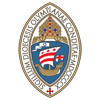Lesson Video and Resources Below…
“Above all, trust in the slow work of God/We are quite naturally impatient in everything to reach the end without delay/We should like to skip the intermediate stages/We are impatient of being on the way to something unknown, something new/And yet it is the law of all progress/that it is made by passing through some stages of instability—/and that it may take a very long time.”
Pierre Teilhard de Chardin, SJ
Art of Discernment – Topography

Our first session of Art of Discernment offered a general orientation to spiritual discernment in the Christian tradition, including a basic definition, 4 prerequisites for discernment, and the overall purpose of discernment. “Why discern?”
The first tool guided the practitioner through a 4-step process for creating a TOPOGRAPHY. This tool provides a humanistic approach to discernment and can be used by people of any faith tradition or for those who practice no tradition in particular. Based in the international research of Andre Rochais and his PRH (Personality and Human Relations) colleagues, this tool was first developed in Pontiers, France in the 1970s as a way to help members of religious orders, along with lay people around the world, to discern their lives.
Participants brought individual discernment to our first session, decisions or situations that require some time and attention. Questions like: Am I called to take this position at this time? In what way will I spend my vacation time this summer? How will I live this situation or relationship?
We spent time in quiet work, sharing and listening in small groups, and closed our time in the large group exploring the questions and observations about the tool.
This Topography method, as well creative expression, reflective writing, and listening and speaking in-depth, are tools that are transferable to a personal practice as well as other faith-based settings and groups.
For your on-going Discernment practice:
- Keep your Topography handy and available for your time of prayer. Re-visit it and add to it as new elements and feelings emerge.
- Practice your reflective questions in response to your Topography, stepping back from your work to ask, “What am I learning about myself? Am I feeling confirmed in my decision? Am I feeling at peace with my choice? Why? Why not?” If not, return to the first steps of your Topography and explore it using the 4-step method.
- For support to significant questions regarding personal identity, meaning and purpose, consider sharing your discernment Topography with a spiritual director, mentor, or friend and in an on-going way. (Session 3 of this series will introduce the practice of companioning one another with spiritual discernment.)
Additional Resources:
Catch-up or Re-visit:
Topography
The initial step involves the creating of a topography, a mapping out of the important elements of the decision or situation in a visual format. The exploration of the topography can be deepened with the processes of creative expression, written reflection, and speaking/listening in a group. All practices will be encouraged in this series as means for become discerning people and are transferable to other faith-based settings and groups.
Materials:
Simple, easy, and inexpensive, meant to encourage freedom and use, located in or around home or found at a local drug store or craft shop. Please do not feel pressured to go to any significant effort or expense to prepare for this program.
- Sketchbook or plain paper, any size
- Notebook or lined paper
- Writing pen
Optional: any creative expression materials found or used at home (colored pencils or paint, collage or mandala-making materials.)
Session One Video:

Our Guide:
Carla Orlando, M.Ed, is an educator and spiritual director who teaches discernment, reflective writing, and contemplative prayer at Seattle Pacific University and at the Grunewald Guild for art and spirituality. Carla’s ministry includes Spiritual Direction Services at the Ignatian Spirituality Center, the Spiritual Exercises of Everyday Life retreat, the Catechesis of the Good Shepherd, and the Jesuit Restorative Justice Initiative. Carla’s somatic method, training, and supervision with PRH (Personnalite et Relations Humaines) International School of Adult Development is integral to her personal approach and guides her work with university students, faculty, organizational professionals, and people of faith.
Questions? Email Sylvia Sepulveda.
Contemplative Creativity meets the the second Wednesday of each month at 6pm PT, via Zoom.
